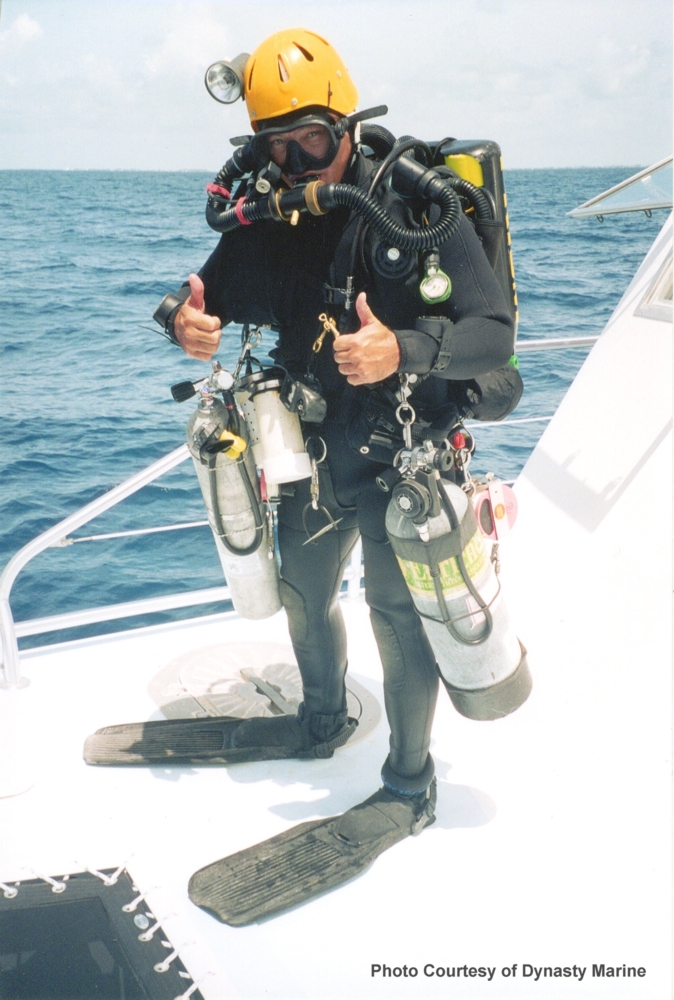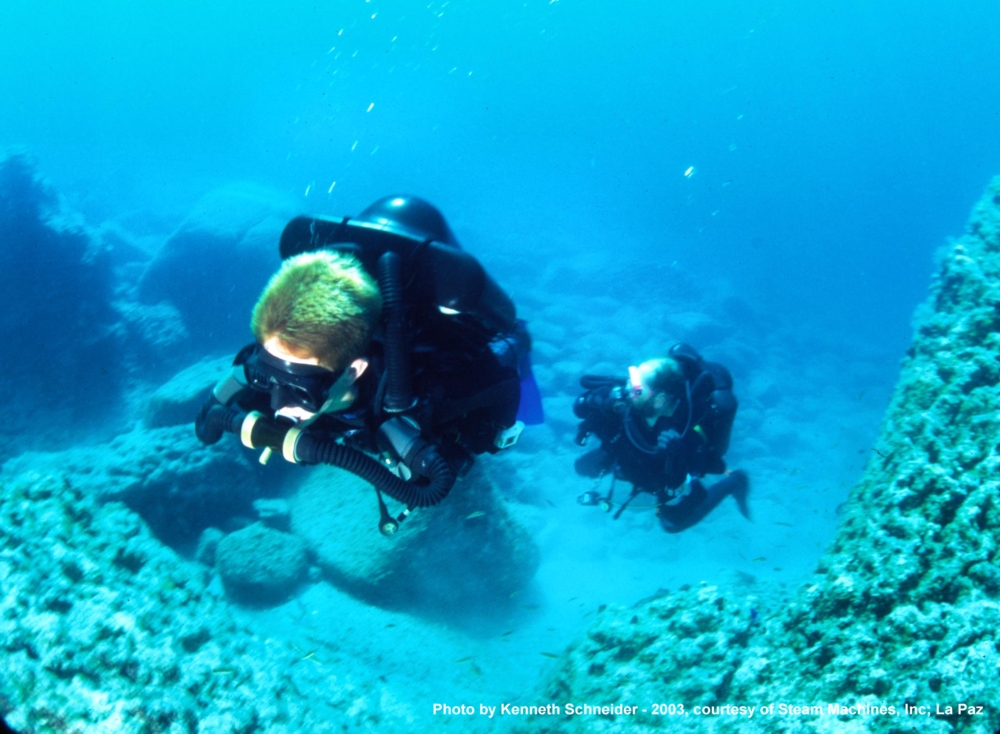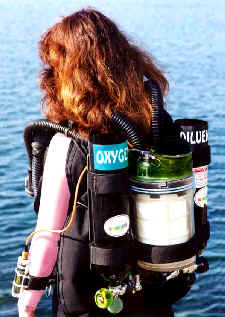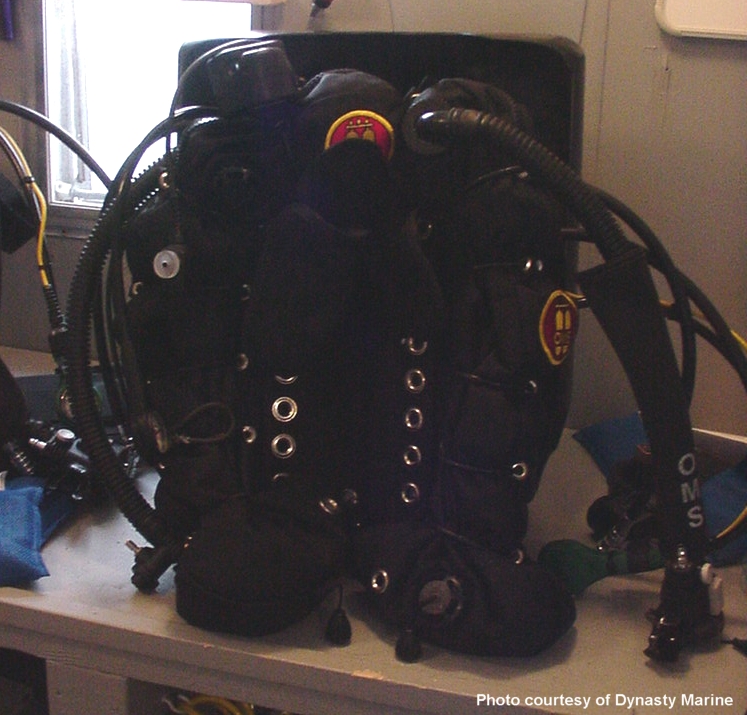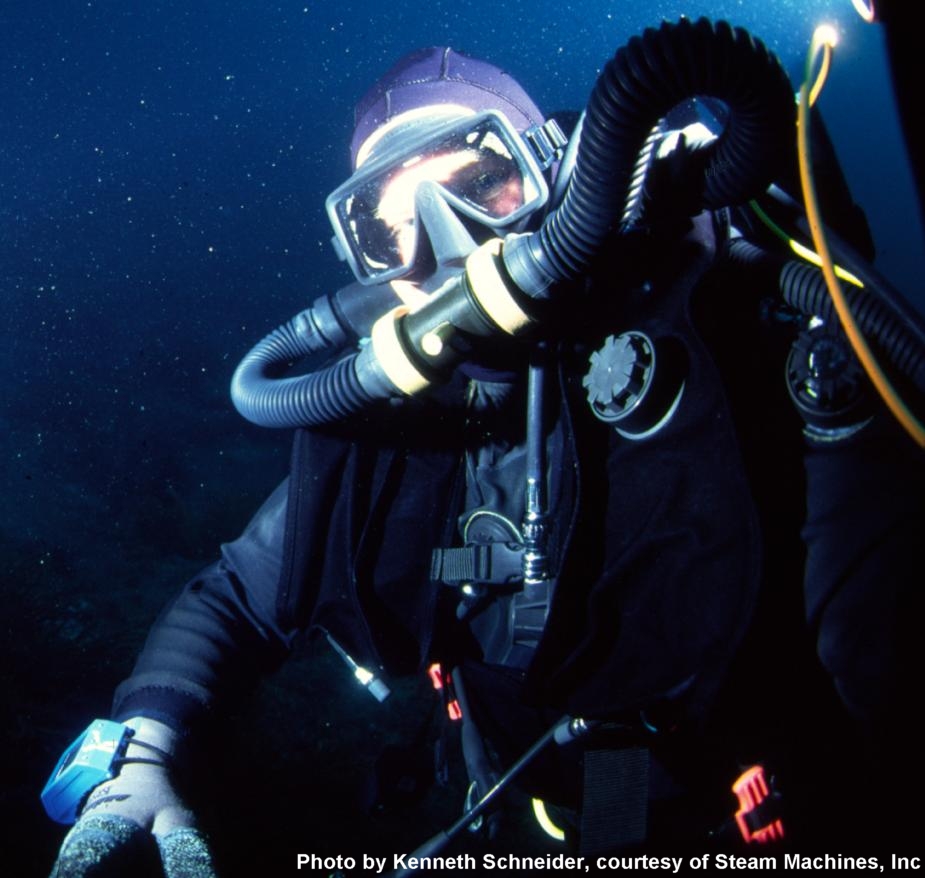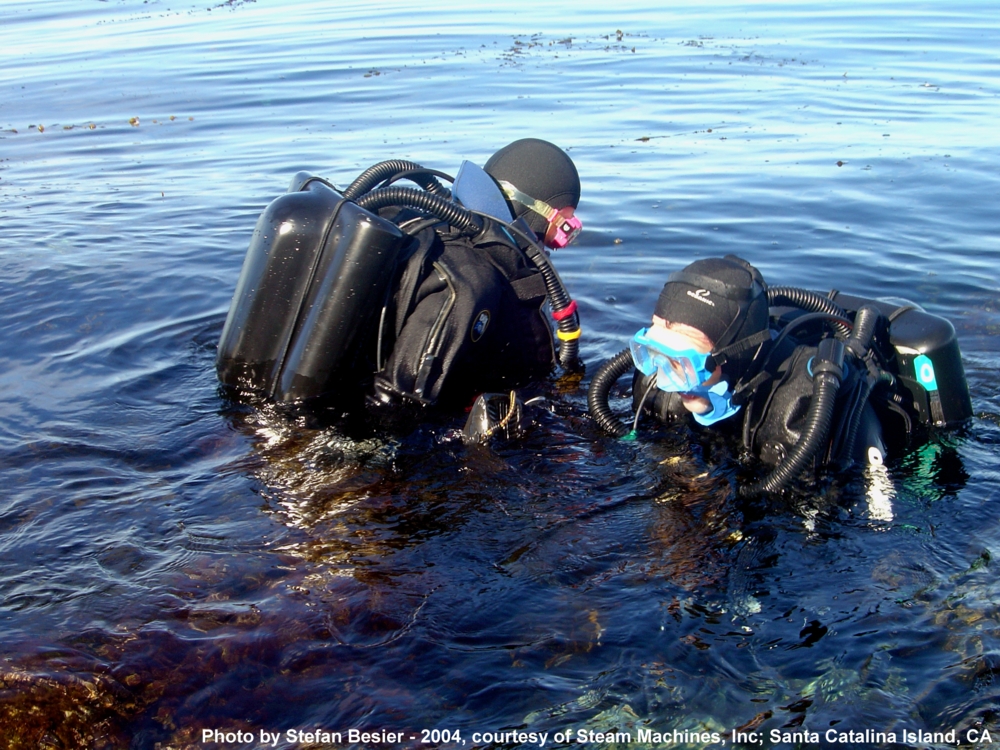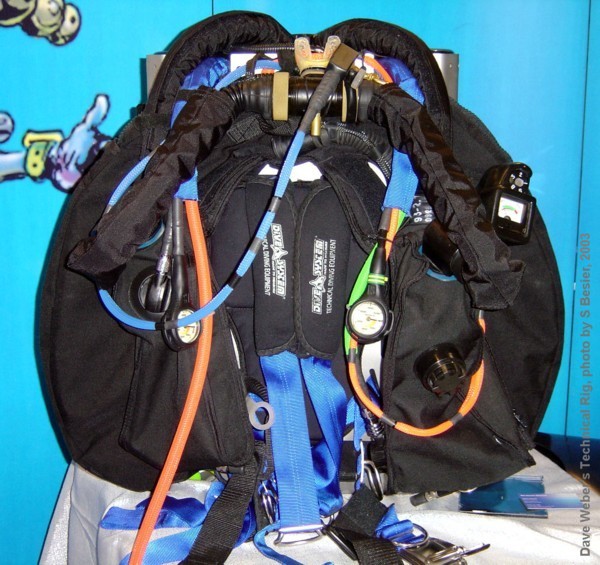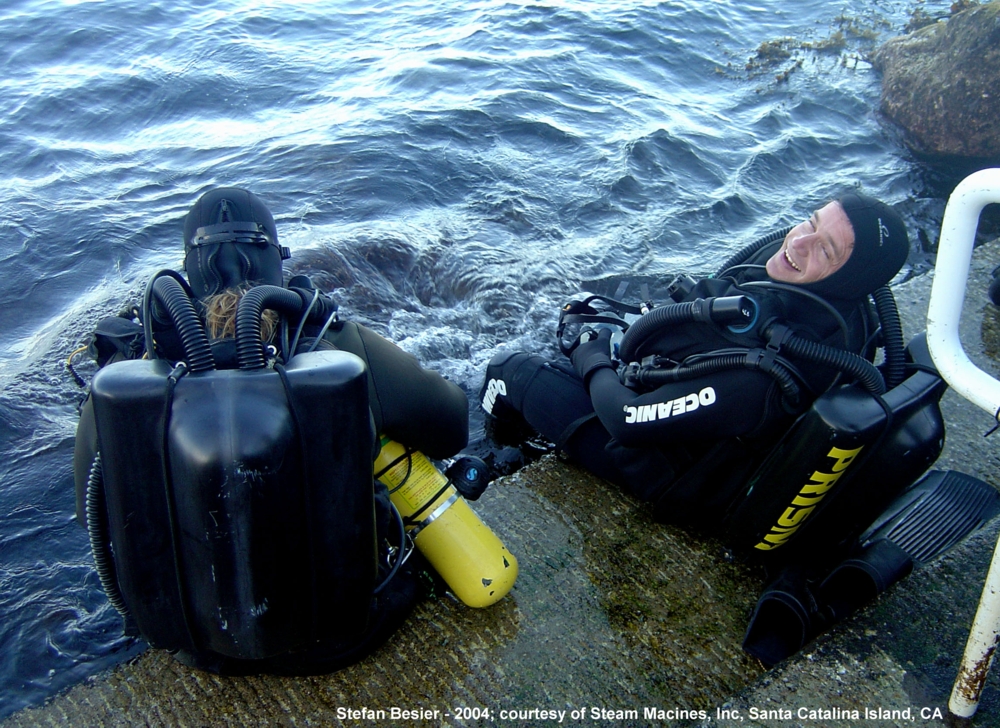Life Support & Marine Engineering
Specializing in Life Support & Marine Engineering Equipment and Training
Specialists in Life Support Technologies, both Marine and Terrestrial, the principles at SMI have over 25 years of innovative engineering experience to assist you. Whether you require assistance with a deep diving mixed gas unit, confined spaces or high altitude application, emergency escape apparatus or specialty enclosed environment air/sea/land transport systems, we have the skills to help you.
SMI continues to work in the marine sector, providing engineering and consultancy support for other various life support equipment and underwater applications after selling its PRISM design to Hollis, a subsidiary of Oceanic in 2007. SMI continues to provide spares, service, and support to our clients for their original PRISM Topaz and SM1600 systems.
Prism ReBreather
"The Prism is the ultimate diving tool for the novice and the advanced diver."
**We are pleased to announce that the Hollis PRISM2s are available from Hollis’ products page.
The PRISM ReBreather is a fully closed circuit, constant PO2, mixed gas-capable system with digital electronic control and manual backups.
Designed for both the recreational and technical diver, it weighs only 47 lbs., fully charged and ready to dive (in standard configuration with twin 19-CFT cylinders and approx. 6-lbs. Sodasorb in the radial flow scrubber). This fact misleads many because with the appropriate user training and diluent, this system may be used to 300 ft.
The unit’s integrated buoyancy compensator and harness assembly includes ditchable weight pockets and an alternative inflation regulator (ScubaPro Air II). Twin over-the-shoulder counterlungs fasten into the harness assembly and offer easy access to manual gas overrides; on the RHS/Inhale lung, there is a dual-mode automatic/manual diluent addition valve (upper inside of elbow) and on the LHS/Exhale lung, there is a manual oxygen addition (lower inside wall).
The unit’s digital electronics are located in a separate, watertight head compartment, outside of the breathing loop, operated by a 9v battery and potted to prevent damage by accidental leaks. Mounted to the outside left of the head compartment is a low-power consumption solenoid assembly.
Inside the electronics, a depth sensor allows the unit to know its position relative to the surface, allowing the system to automatically default to a PO2 of 0.7 when the rig is shallower than 18 ft. During the pre-dive check, the diver calibrates the unit and selects setpoint for the dive (pre-set options are 0.7, 1.0, 1.2, 1.3, and 1.4). As soon as 18 ft. is achieved, the unit automatically switches over to the setpoint selected for the dive. This feature prevents unnecessary off-gassing of the gas supply whilst at the surface or too shallow to achieve an elevated PO2.
The analog secondary display is driven directly by the sensors and requires NO BATTERIES to operate. This display allows the diver to monitor their PO2 and if they choose to increase it above the 0.7 default setting by manually adding additional oxygen into the loop (e. g. on ascent).
The primary display may be a sequential LED wrist-mounted bar or a mouthpiece-mounted HDD (head-down display). They indicate Alarm, Very Low PO2, Low PO2, Setpoint, High PO2, and Very High PO2. The Alarm is bi-colored, flashing red to indicate a low battery and green to indicate a sensor/s is out of range.
Principles of Operation
The PRISM ReBreather is a digitally controlled, constant PO2, modular, closed-circuit diving system. Its breathing loop consists of a closable mouthpiece assembly with mushroom/check valves either side, which ensures uni-directional flow.
Dual, front-mounted counterlungs provide the diver with a flexible reservoir equivalent to the maximum displacement of the diver’s own lung volume. These counterlungs are fitted with both automatic and manual gas addition systems and a variable volume control valve (used upon ascent to vent excess expanding gas volume or to purge the loop).
A radial flow scrubber canister is mounted vertically on a backplate attached to the integrated BC, between twin supply cylinders (one each, oxygen and diluent). An optional cowling may be fitted.
The electronics, sensors, and batteries are mounted in the electronics head assembly at the top of the scrubber, with supply hoses feeding over the diver’s shoulders into the top of the counterlungs. A lighted primary display offers a quick reference of unit performance with status and alarm indicators.
An independent secondary display driven totally by the sensors themselves and requiring no battery verifies the unit’s performance. With the electronics switched on, the secondary also provides a status check for the battery and displays the setpoint selected for the dive. The electronics vote between the three proprietary galvanic sensors and control the operation of a low-wattage solenoid valve on the oxygen supply. Diluent addition is automatically achieved as hydrostatic pressure increases and the counterlung collapses against the valve actuator.
Fully charged, in standard configuration, the unit weighs approx. 47 lbs. and has a recommended scrubber duration of five hours.
A typical inhalation cycle (see diagram below) has the diver inhaling from the right (inhalation) lung, through the mouthpiece assembly into the left (exhalation) lung. The exhaled gas will then pass up over the diver’s left shoulder and into the radial scrubber canister where it will travel down the inner tube and diffuse radially out through the absorbent to the edge of the clear bucket and condensing face. The clean gas will then pass back into the right lung to be rebreathed. During this final step, the clean gas passes over the sensing faces of three galvanic sensors that analyze the oxygen content of the gas and report to the electronics.
Breathing Loop Diagram
The electronics take the readings from the three sensors and vote between the readings and the pre-selected setpoint. This information is then used to control the addition of oxygen as required into the breathing loop. The data is also displayed on the primary display.
Oxygen injection occurs into the expired gas manifold, prior to the scrubber, so that the oxygen is forced through the absorbent before entering the inhalation cycle, thus aiding gas mixing.
A manual oxygen override exists, mounted on the lower inside wall of the left (exhalation) lung, and this may be used to fly the system manually or to rapidly assist the breathing loop to regain setpoint after an accidental gas loss or mask clear.
Diluent is admitted directly into the loop as a result of increases in hydrostatic pressure. As the ambient pressure on the system increases, causing the counterlungs to collapse, a combination automatic/manual diluent addition valve is activated, which automatically adds sufficient gas to return the loop volume to ambient pressure. This combination valve is sited at the top of the right (inhalation) lung.
At all times during operation, the diver has access to an ON/OFF system switch, the gas supply cylinders, integrated Air II open-circuit bailout, and manual override features of the unit.
Length: 21 inches
Width: 17 inches
Depth: 9 inches
Weight: Approx. 47 lbs. (fully charged)
Buoyancy: Neutral
Scrubber Type: Radial Flow
Scrubber Capacity: approx. 6 lbs. of 6–12 Sodasorb
Scrubber Duration: Standard 4 hours (4.5C @ 1.35 lt. per min. CO2, using 6–12/8–12)
(NOTE: 4–8 mesh absorbent may be used for training purposes or shallower than 140 fsw. for a minimum of 2.5 hours or a maximum of 3 hours in cold water and moderate workloads.)
Bottle Capacity (standard): Oxygen: 19 CFT @ 3000-psi diluent: 19 CFT @ 3000 psi Optional: 13’s, 15’s, 17’s, 19’s, 30’s, and 45’s.
Breathing Loop Capacity: Approx. 8 liters (minus the diver)
Battery: 9v
Battery life: Approx. 40 hours @ 70ºF temperatures based upon a standard high-quality alkaline such as Duracell Ultra.
Sensors: 3 proprietary galvanics – SMS202
Sensor Life: Approx. 12 months in the air or 100 hours of dive time
Displays:
Primary: Battery-driven sequential LED’s
Secondary: Analogue gauge driven directly by the sensor output, with battery life and setpoint indicator
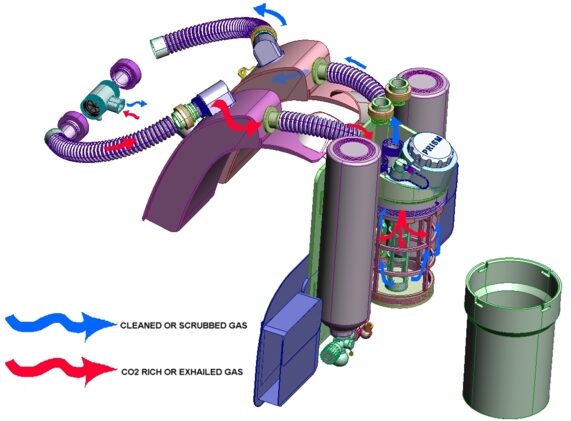
Support and Supplies
We carry consumable spares for the PRISM Topaz, including but not limited to sensors, D-seals, O-rings, gaskets, calibration pots, compression pads, scrubbers, displays, solenoids, mouthpieces, check/mushroom valves, supply hoses, regulator rebuild kits, tank valve rebuild kits, etc. Please contact us directly for availability and price.
General Supplies: Please note spares common to the PRISM Topaz and SM1600 are also available, but not all MK style parts; please ring for availability and pricing.
Instructors and Training
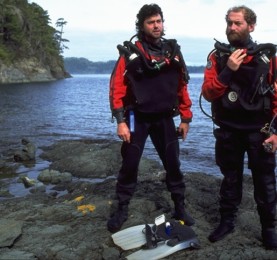
SMI has a selection of experienced instructors you may contact for help and advice on your diving needs, covering all levels as well as PRISM ReBreather CCR. Please select an Instructor from the list below who may help you with your education.
All maintenance classes, appropriate for user through to expedition level, are run through SMI’s HQ in Lebanon, TN on an annual basis as required. Please contact us for details.
Basic Instructors
| Basic Instructors | Country | Website |
|---|---|---|
| Yves Beaudry | Canada | |
| Jeff Bozanic | CA | www.diversone.com |
| John Duggan | TX | www.duggandiving.com |
| William Gambrill | NY | smrebreathers.com |
| Grant Graves | CA | www.facebook.com |
| Danny Huton | Canada | |
| Dale Mcknight | Canada | |
| Luke Nelson | Western Australia | www.imagedive.com.au |
| Wings Stocks | CA | |
| Terrence Tysall | TX | www.cambrianfoundation.org |
| Matt Elder | CA | www.facebook.com |
Trimix Instructors
| Trimix Instructors | Country | Website |
|---|---|---|
| Ray Hunley | TX | www.divesouthpadre.com |
| Gerard Newman | HI | www.opua.org |
| Lonnie Sharp | CA | www.sandiegodivers.com |
| Heather Knowles | MA | www.northernatlanticdive.com |
| David Caldwell | MA | www.northernatlanticdive.com |
Instructor Trainers
| Instructor Trainers | Country | Website |
|---|---|---|
| Matthew Addison | TX | |
| Peter Readey | TN | |
| Ron Scorese | NJ | |
| Tim O’Leary | TX | www.divesouthpadre.com |

